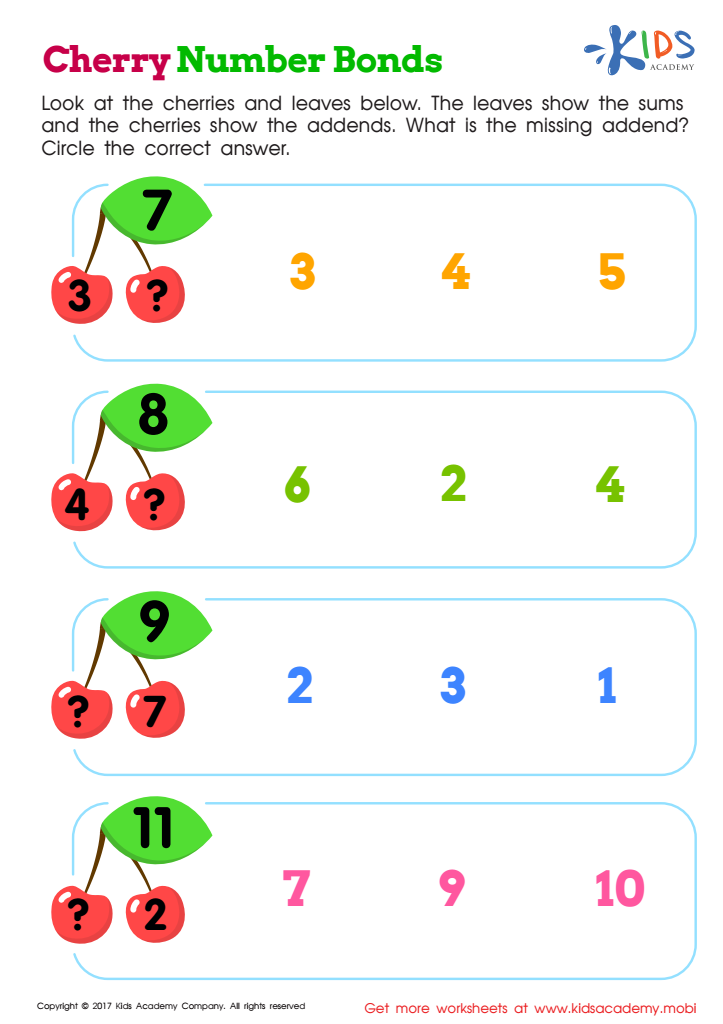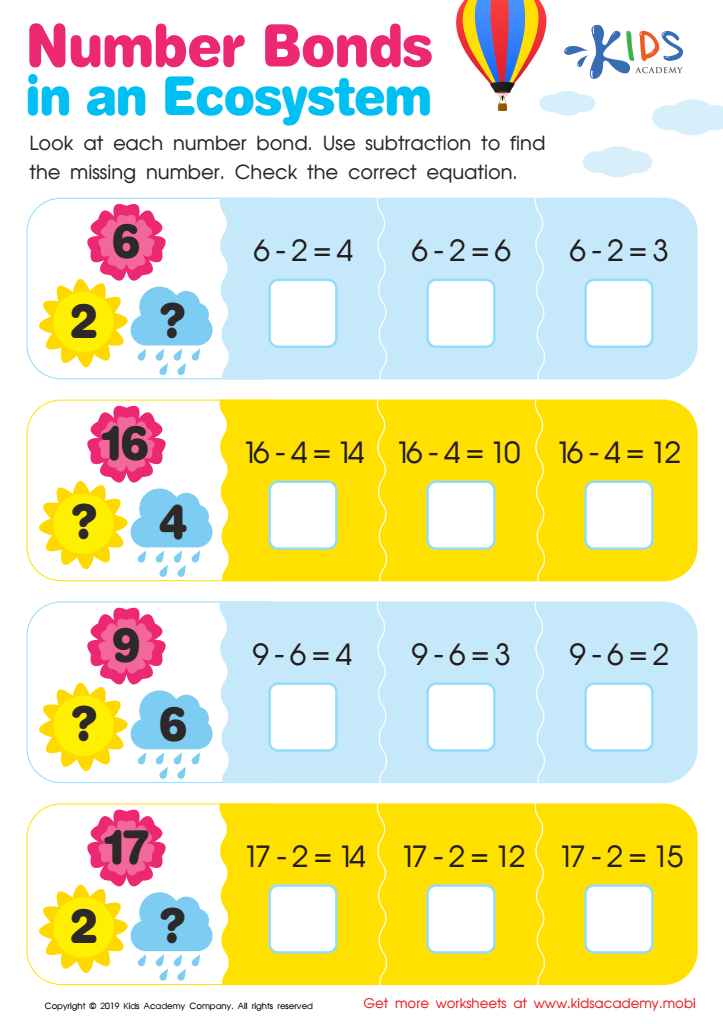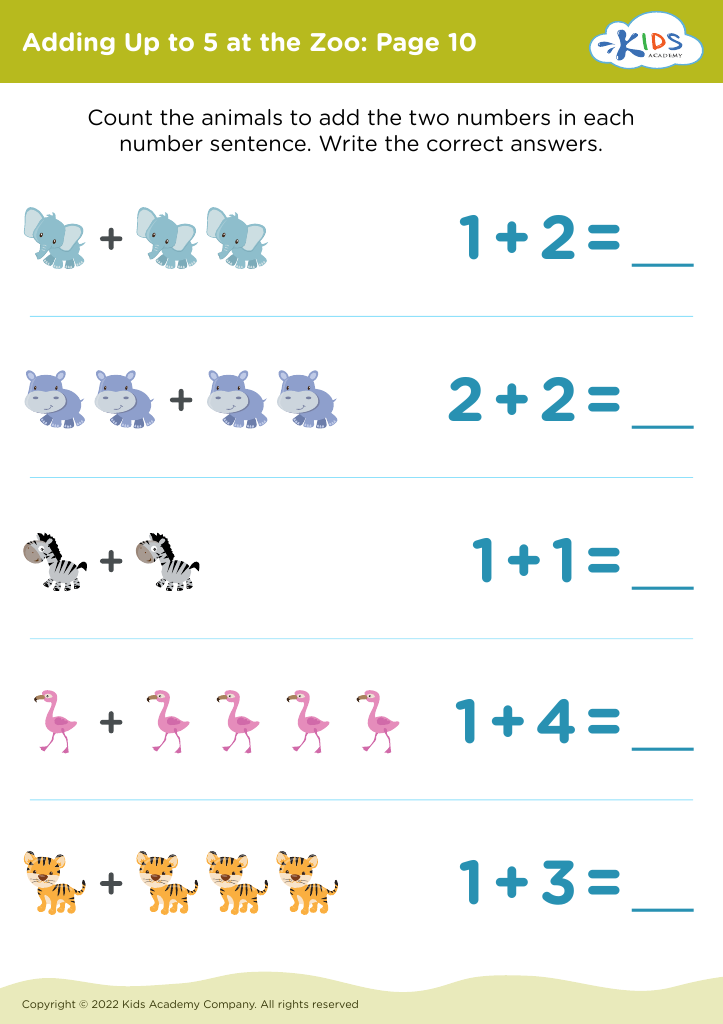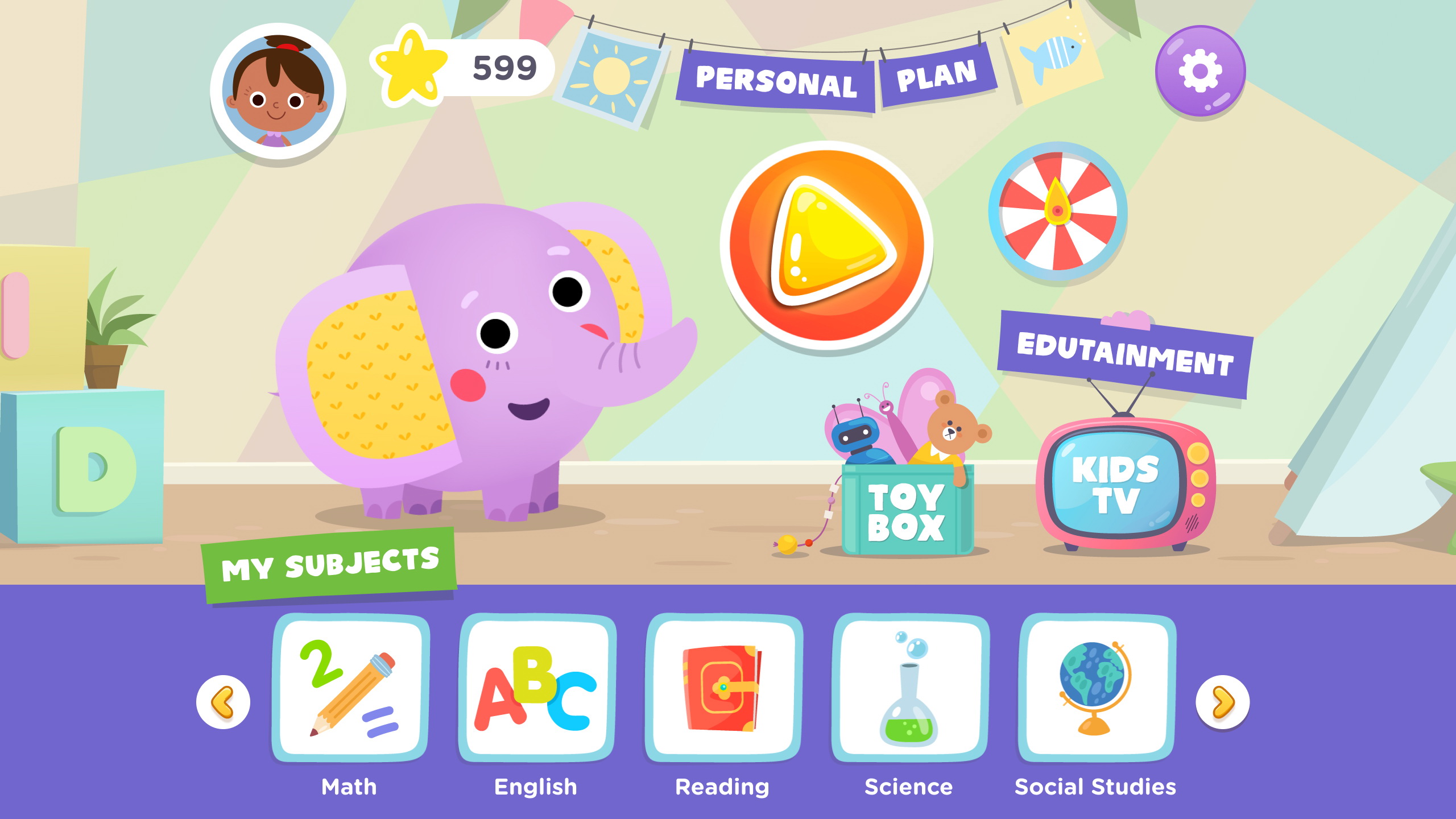Understanding number bonds Worksheets for Ages 4-7
3 filtered results
-
From - To
Introduce your young learners to the foundational math concept of number bonds with our engaging worksheets designed for ages 4-7. These printable activities from Kids Academy make learning fun while enhancing your child's understanding of how numbers combine and relate to each other. Perfect for preschoolers and early elementary students, each worksheet is crafted to build addition and subtraction skills through colorful illustrations and hands-on exercises. Boost your child's confidence and competence in math, and set them up for future success with our effective, easy-to-follow number bonds worksheets. Download and start learning today!


Cherry Number Bonds Worksheet


Number Bonds in an Ecosystem Worksheet
Understanding number bonds is fundamental for children aged 4-7 because it lays the groundwork for mathematical proficiency. Number bonds visually and conceptually represent how numbers can be split into parts and combined to form a whole, fostering number sense—a critical mathematical skill. This foundational knowledge allows children to see the relationships between numbers, essential for addition and subtraction fluency.
For instance, if a child understands that 5 can be broken into 2 and 3, they can easily solve problems like 5 - 2, knowing that the answer must be 3. This intuitive grasp makes arithmetic less abstract and more tangible. Furthermore, this insight can generalize to more complex concepts such as place value, multiplication, and division as they progress in their education.
For parents and teachers, nurturing this understanding at an early age sets the stage for future success in mathematics. It helps children develop logical thinking and problem-solving skills, both of which are critical in everyday life and future academic pursuits. By prioritizing number bonds, parents and educators empower children with the confidence and competence to tackle mathematical challenges, making learning both effective and enjoyable. Ultimately, this early numeracy skill becomes a stepping stone towards a robust, lifelong mathematical understanding.
 Assign to My Students
Assign to My Students







.jpg)














